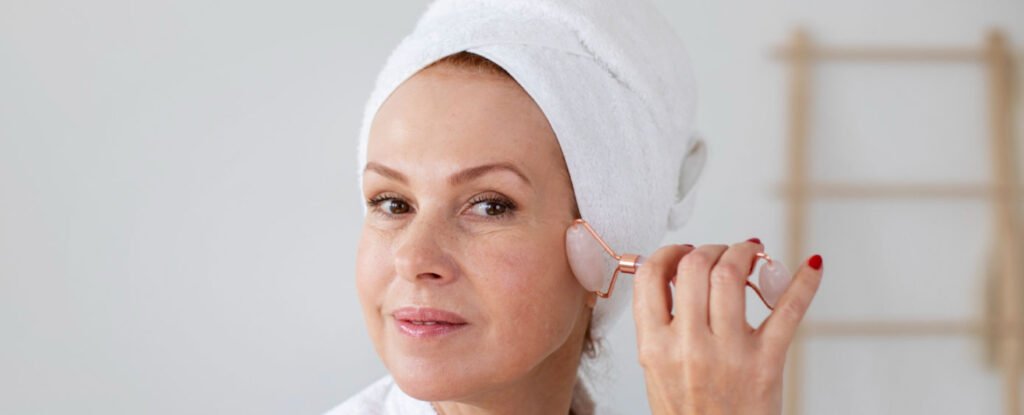Hormonal Influences on the Skin by Estrogen
Estrogen plays a vital role in maintaining the overall health and appearance of our skin. It is responsible for stimulating collagen production, the supporting protein that gives our skin its firmness and elasticity. When estrogen levels decline during menopause, the production of collagen decreases, leading to visible signs of aging such as wrinkles and sagging skin.
In addition to collagen production, estrogen also acts as a regulator of pigmentation in the skin. It works in tandem with progesterone to maintain a delicate balance, ensuring an even distribution of pigments. This harmonious collaboration helps to keep our skin tone balanced and prevents the occurrence of dark spots or hyperpigmentation.
Another remarkable function of estrogen is its ability to promote the development of new blood vessels in the skin. This ensures that an adequate supply of oxygen and nutrients reaches the skin cells, giving us that youthful glow. However, as estrogen levels decline, this mechanism becomes less efficient, resulting in a dull and lackluster complexion.
When the Protective Function of Estrogen is Lost
As menopause progresses and estrogen levels continue to decline, the skin undergoes several notable changes. One of the most common issues faced by menopausal women is dryness. Estrogen helps to maintain the skin’s moisture levels by supporting the production of natural oils and lipids. Without this hormonal support, the skin can lose its ability to retain moisture, leading to dryness, flakiness, and a feeling of tightness.
Another consequence of decreased estrogen is impaired wound healing. Estrogen plays a crucial role in the various stages of the wound healing process, including inflammation, cell proliferation, and tissue remodeling. As estrogen levels decline, these processes become less efficient, resulting in slower healing times and an increased risk of infection.
Furthermore, the loss of estrogen leads to thinning of the skin. Collagen, the key structural protein responsible for skin thickness, is produced in lower quantities when estrogen is scarce. This can result in a fragile and easily damaged skin barrier, making it more prone to bruising, tearing, and irritation.
Additionally, pigmentary changes become more frequent during menopause. Estrogen helps regulate the production of melanin, the pigment responsible for our skin color. When estrogen levels decrease, the delicate balance of melanin production is disturbed, leading to the development of age spots, uneven skin tone, and an overall dullness in complexion.
Key Ingredients in Menopausal Skin Care
As we navigate the changes that menopause brings to our skin, the utilization of effective skincare ingredients becomes crucial. Here are some key ingredients to look for in menopausal skincare products:
-
Retinoids :
These vitamin A derivatives are renowned for their ability to stimulate collagen production and promote cell turnover. Regular use of retinoids can help rebuild collagen and improve overall skin texture, reducing the appearance of wrinkles and fine lines. -
Hyaluronic Acid :
Known for its exceptional hydrating properties, hyaluronic acid is a must-have ingredient for menopausal skin. It has the remarkable ability to attract and retain moisture within the skin cells, plumping them up and reducing dryness and the appearance of wrinkles. -
Vitamin C & E :
These powerful antioxidants are essential for menopausal skin. They help remove harmful free radicals that contribute to skin aging and damage. Vitamin C also aids in brightening the complexion and promoting a more even skin tone. -
Niacinamide :
This multitasking ingredient offers numerous benefits for menopausal skin. It helps enhance the skin's barrier function, reducing moisture loss and improving overall hydration. Niacinamide also possesses anti-inflammatory properties, soothing any redness or irritation, and promoting a calmer complexion.
By incorporating products containing these key ingredients into your skincare routine, you can effectively address the specific concerns of menopausal skin and help restore its vitality and radiance.
In conclusion, understanding the effects of hormonal changes during menopause is crucial for maintaining healthy and vibrant skin. While declining estrogen levels can lead to various skin issues, utilizing targeted skincare ingredients can help mitigate these effects. By embracing a comprehensive approach to skincare and considering the unique needs of menopausal skin, you can confidently navigate this phase of life with grace and glowing skin.
“Menopausal skin may come with its challenges, but with the right ingredients and a little extra love, we can keep it looking fabulous!”


